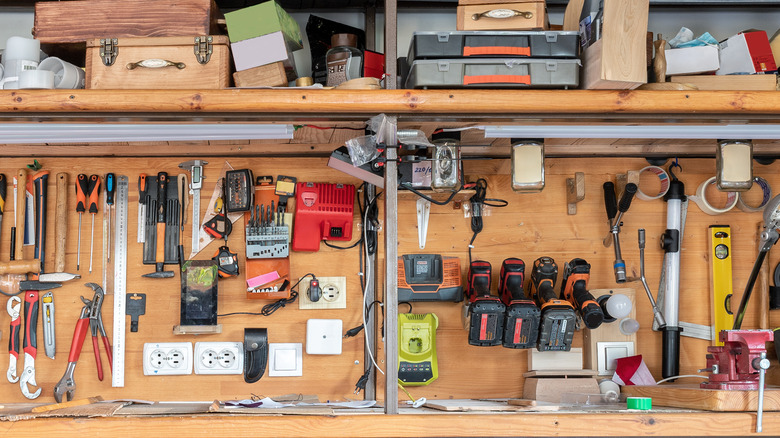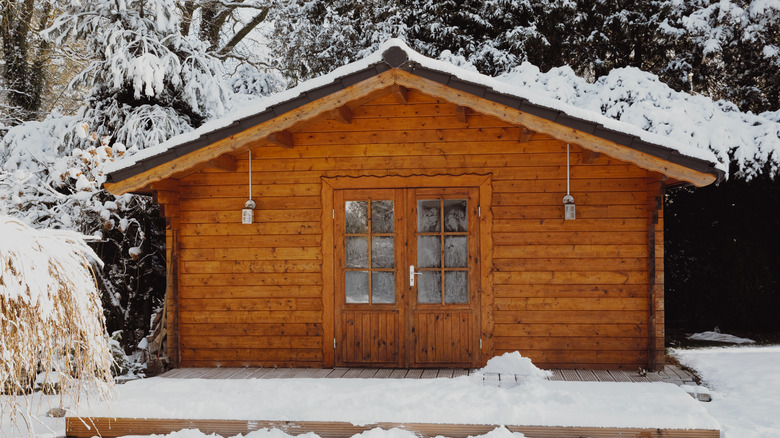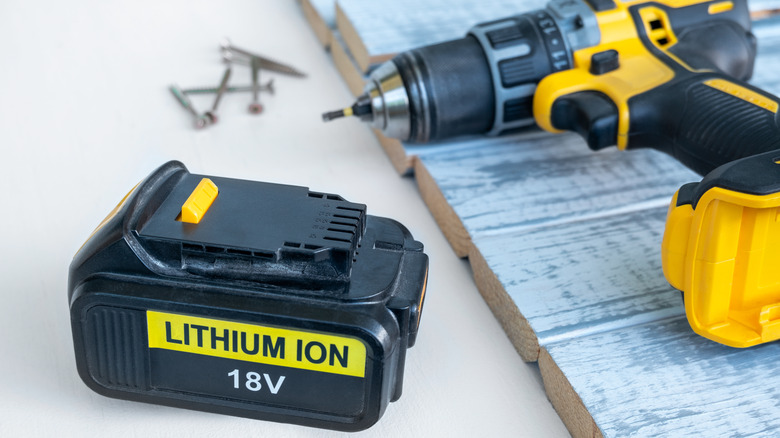Here's What You Need To Do With Your Power Tools In The Winter
When the temperature starts to drop and the snow piles up, it's no longer the best time for outdoor hardware projects, the occasional snow blower job notwithstanding. Unless you have your own temperature-regulated workshop, odds are good that most of your power tools will end up in your garage or shed once winter rolls around, and won't move from there until things thaw out.
Before things get too frosty, though, you need to make sure that everything is stored properly. That way, when you come back to your projects in the spring, all of your tools are actually still working.
Proper wintertime storage of power tools ensures their overall longevity and prevents any potentially dangerous breakdowns of parts. This is particularly vital for battery-powered power tools, as it's no secret that extreme temperatures and batteries don't mix. To ensure that your batteries don't go dead on you during the holidays, here's a quick overview on storing your power tools throughout the cold season.
What happens to frozen tools?
While they're designed to be sturdy and resistant, even the most heavy-duty power tool batteries can't withstand long-term exposure to extreme temperatures — hot or cold. If you leave your tools in an unheated shed in the middle of a particularly nasty winter, don't be surprised if they've completely failed on you the next time you try to use them.
Extreme cold reduces the efficacy of the chemical components in the battery, lessening its ability to receive and store electricity. As that storage capacity fails, whatever charge was already in the battery will drain out. When the battery drains past a critical point, the charging poles can become damaged, reducing its capacity even further until it eventually can't hold a charge at all.
On a related note, the presence of winter also means an increase in ambient water. If even a little bit of that water gets onto your tools and batteries, whether from melted snow or haze, it'll work its way inside and cause severe damage. Even a small drop of water can set off a corrosion process within the battery, damaging its internal components and reducing its structural integrity.
Same with any tools that require oil or lubrication during operation — those liquids need to be properly warmed at least a few hours before resuming use.
Safely storing tools in the cold
The first thing you should do to prepare your tools for winter is charge up their batteries to at least 50% capacity. A little extra juice in the tank will help the batteries endure through the power-draining cold. After that, you should separate the batteries from the tools, just to ensure there's no passive power drain.
The same goes for charging cradles; even if you're not actively using a tool or device, as long as the battery is attached, its charge will gradually trickle away. Leaving it that way for an entire three-month winter will definitely deplete it.
Once all that's done, you're going to want to find a dry, even-temperature space to store both the tool itself and its battery. You're looking for a spot that's at least 50 degrees Fahrenheit (10 degrees Celsius), though no hotter than 100 degrees Fahrenheit (38 degrees Celsius).
Basically, if there's a cabinet or drawer in your home that's in a temperature-regulated room and won't be exposed to water or snow, that's where you want to stash your tools and batteries. Just don't store them right next to a heater, or the other extreme temperature will cause the same problems as intense cold.


